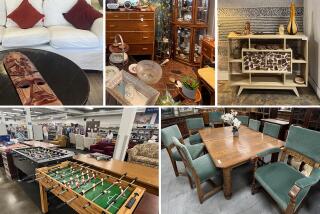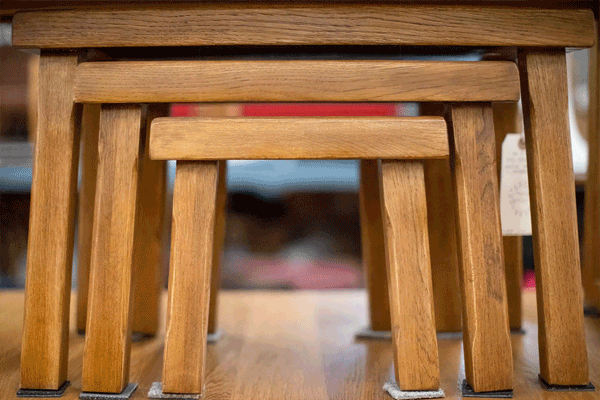Around Home : Art Deco Furniture
- Share via
THE FURNITURE OF the 1920s and ‘30s--like the ceramics, jewelry and glassware of the period--reflects all aspects of Art Deco design, from its classical thrust to its use of new industrial materials.
However, the furniture designers themselves were divided into two opposing groups: traditionalists who tried to adapt the forms and techniques of the past to the demands of modern life, and innovators who rejected the past (seen in the many Louis XVI or Empire reproductions common at the beginning of the 20th Century) and hurried to use the new materials of the modern era. Traditionalists disliked the straight lines of the machine age and favored curves; they produced furniture characterized by fine workmanship and rich materials such as rare and exotic woods.
Emile-Jacques Ruhlmann was perhaps the most talented of the French traditionalists. His furniture was renowned for its perfect workmanship and its use of rare woods: purple amaranth, violet wood and macassar ebony enriched with ivory plaques, marble and Morocco leather. Today the best furniture of the period is in museums or sells at auction for hundreds of thousands of dollars. Even in the 1920s, Ruhlmann’s furniture was available only to the wealthy.
The greatest artifact, and the finest joint endeavor, of the entire Art Deco period was the French ocean liner Normandie, whose fitting out began in 1935. The liner, on which no expense was spared, engaged the services of almost every Art Deco artist in France, every cabinetmaker and metal worker, every silversmith, every glass and ceramics craftsman. No one had seen anything so splendid. In its brief career, the ship was a floating tribute to French style and taste--and to the Art Deco period in particular. Unhappily, the magnificent ship was destroyed by fire in New York harbor at the beginning of World War II. Some of the furniture and artwork survived but most is gone forever.
There is a great deal of American Art Deco furniture available, and it is far less expensive than the work of the French cabinetmakers. In 1932 in New York, Radio City Music Hall was built as a part of Rockefeller Center, and it is the definitive expression of Art Deco in America. Its interior decoration was under the direction of Donald Deskey, who designed the furniture, lamps, fabrics and wallpapers. His designs had great influence, in much the way the work of Frank Lloyd Wright and the Bauhaus school, with its uncluttered and sophisticated elegance, left its stamp on the entire era of the 1920s and ‘30s. Authentic furniture and artifacts of those years are sought after today.
Look for American Art Deco furniture at Antiquarius, Harvey’s Antiques and HaRry in Los Angeles; Main Street USA in Venice; Pasadena Antique Center in Pasadena; Century Antiques in Glendale; Antique Trading Co. in Valencia; Snooty Fox in Ventura, and Treasure Trove in San Diego.


